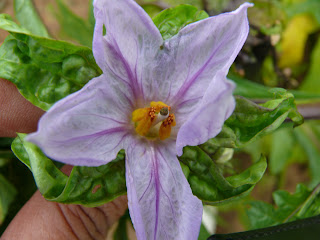B K Singh
Agricomplex Newsletter 25 (2): 2, 2010
Email: bksinghkushinagar@yahoo.co.in
Two genotypes of Naga chilli were transplanted in polyhouse during Mid January at inter- and intra-row spacing of 75 cm. The polyhouse is cladded with 6 mm poly-carbonated UV stabilized sheet, 40 mesh nylon side-net and roof shading with 50 % green colour shading-net. The plant height varied from 2.5-3.1 m and number of fruits ranged from 109-175/ plant for total cropping season of 8 months. The average green fruit weight varied from 4.103-4.390 g. The fruit yield performance in polyhouse was realized excellent, i.e. 19.5 kg from an area of 25 m2 (78 kg/ 100 m2).



